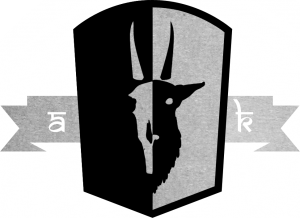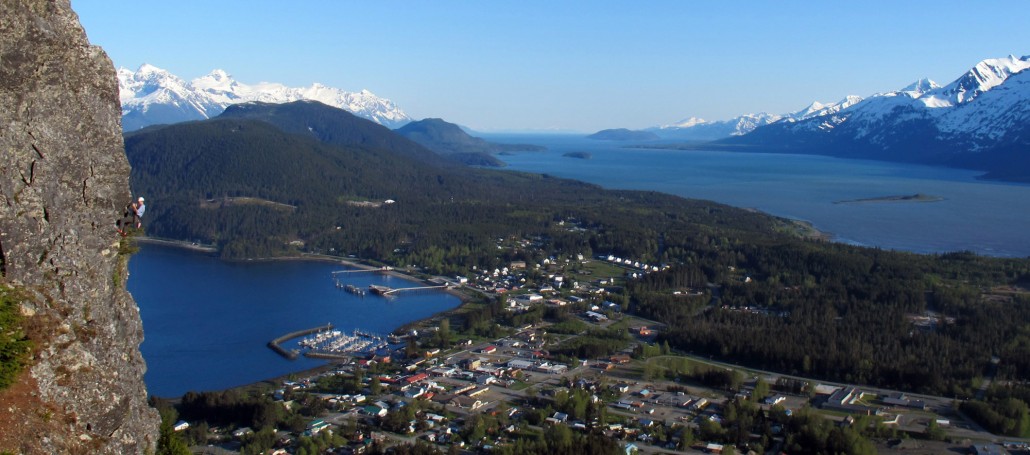[av_notification title=’READ THIS:’ color=’red’ border=” custom_bg=’#444444′ custom_font=’#ffffff’ size=’large’ icon_select=’yes’ icon=’ue83e’ font=’entypo-fontello’]
Many of the trips & activities described here are DANGEROUS, serious injury or death can/does occur. The Bush Atlas makes no claims to the safety or even realistic feasibility of any of the activities referenced on this site. Always travel within your ability.
[/av_notification]
Contents
- About this guide
- Difficulty/Seriousness; grading system
- Technical Gear Recommendations
- Safety/Self Rescue/
- Communications
[av_hr class=’default’ height=’50’ shadow=’no-shadow’ position=’center’]
About the Atlas
 This guide attempts to chronicle a wide variety of adventure recreation in Southeast Alaska. Our goal is to make the extreme a little bit more tangible. Through a massive, region-wide effort, we will take alaskan adventure to the next level. This guide is largely user-generated. If you get after it…
This guide attempts to chronicle a wide variety of adventure recreation in Southeast Alaska. Our goal is to make the extreme a little bit more tangible. Through a massive, region-wide effort, we will take alaskan adventure to the next level. This guide is largely user-generated. If you get after it…
[sabai-directory-add-listing-button]
Credibility/Responsibility
The Bush Atlas is a user-generated resource. Most of the listings here come from individuals in our communities, while we do screen all listings before posting them- it is the responsibility of all users to determine the validity and accuracy of any given post. If you have knowledge that seems contradictory to something you see here, please help out the next person and make a comment in the review section under each listing.
[av_hr class=’default’ height=’50’ shadow=’no-shadow’ position=’center’]
Difficulty/Seriousness Grading
FUN FACTOR |
This is a totally arbitrary system the rates the overall quality of the adventure from an enjoyablity standpoint.
|
|---|---|
LENGTH |
The Yosemite Decimal System involves an optional Roman numeral Grade that indicates the length and seriousness of the route. The Grades are:
|
HIKING/CLIMBING; TECHNICAL DIFFICULTY |
The system consists of five classes indicating the technical difficulty of the hardest section:
|
CLIMBING; PROTECTION |
An optional protection rating indicates the spacing and quality of the protection available, for a well-equipped and skilled leader. The letter codes chosen were, at the time, identical to theAmerican system for rating the content of movies:
|
CLIMBING; WATERFALL ICE |
This system measures the difficulty of routes on water ice. The WI scale currently spans grades from 1–7. There also exists a rating scale for Alpine Ice (compacted snow/ glacial ice) that has the same rating system as the “WI” system, but is instead denoted by “AI.” The primary difference between the two is the density of the ice, Water Ice being much more dense.
|
MOUNTAIN BIKING |
 (table from International Mountain Bike Association) (table from International Mountain Bike Association) |
WHITEWATER/ RAPIDS |
may be changed to an apppropriate Class 5.x rating.
(Information from American Whitewater) |
[av_hr class=’default’ height=’50’ shadow=’no-shadow’ position=’center’]
Technical Gear Recommendations
ALPINE ROCK RACK |
|
|---|---|
TECHNICAL ROCK RACK |
|
ICE RACK |
|
BACKCOUNTRY SKI KIT |
|
[av_hr class=’default’ height=’50’ shadow=’no-shadow’ position=’center’]
Safety & Self Rescue
If you or a member of your group is injured or becomes ill in the backcountry of Southeast Alaska, you can not rely on outside help. Communication of any kind with the outside world, even in an emergency, is difficult from most wilderness locations. Cell phone reception is almost non-existent. Even with good communication (a must!), the volatile weather routinely renders any chance of rescue by air hopeless. Your group must be prepared and equipped for a bivouac, rescue, evacuation, equipment repair or handling of other misfortunes that may be encountered. It is not unheard of for parties to wait for over a week even for a planned extraction by air. People travelling in the backcountry should be trained in first aid. There are several local agencies that offer first aid trainings:
- Wilderness Medical Associates
- American Red Cross
- International Wilderness Leadership School
- Alaska Heli-Skiing
[av_hr class=’default’ height=’50’ shadow=’no-shadow’ position=’center’]
Communication
This is a highly debated subject. Many who venture into the wilds of Alaska do so to distance themselves, to experience the world through a different lens and to experience real solitude. There is no question that having a communication device changes that. The issue comes when something goes wrong, many people take this risk knowingly, and are willing to deal with the consequences. Many are just unaware of the realities of what can/does happen. Unfortunately when something goes wrong, even if it is just coming home late due to weather- if the world back home has no way of knowing what is going on, expensive/risky rescue operations can/have been launched. There have been several cases where people have been stuck out due to weather for more than a week, who were just fine, but because they had no way of letting people back home know they were ok, very expensive (public funded) search & rescues have been executed. If not for yourself, do everyone else a favor. If you are going into the backcountry for more than a couple of days, and people know about it… bring communication.
Satellite Phones
By far the best option, they work. There is no alternative to being able to communicate if something goes wrong. In the case of ski planes/helicopter support, a sat-phone is almost mandatory (for some pilots, totally mandatory) to let your pilot know what the current conditions are. There cost is prohibitive for many folks, fortunately they can be rented. Iridum is the way to go… Globalstar does not work very well in this region
Satellite Phone Rentals
- Alaska- Anchorage Satellite Phones (only for those who think ahead… these are shipped from Anchorage)
Important Phone Numbers
Coast Guard: (907) 463-2065 -or- 911
| POST LOCATION | PHONE NUMBER | FAX NUMBER | MAILING ADDRESS | ZIP |
|---|---|---|---|---|
| Anchorage | 907-269-5511 | 248-9834 | 5700 E Tudor Road | 99507 |
| Anchor Point | 907-235-8239 | 235-8067 | P.O. Box 807 | 99556 |
| Aniak | 907-675-4398 | 675-4498 | PO Box 167 | 99557 |
| Bethel | 907-543-2294 | 543-5102 | PO Box 268 | 99559 |
| Cantwell | 907-768-2202 | 768-2203 | PO Box 28 | 99729 |
| Cold Bay | 907-532-2440 | 532-2724 | PO Box 42 | 99571 |
| Coldfoot | 907-678-5211 | 678-3668 | PO Box 9046 | 99701 |
| Cooper Landing | 907-595-1233 | 585-5911 | PO Box 741 | 99572 |
| Cordova | 907-424-3184 | 424-5454 | PO Box 379 | 99574 |
| Crown Point | 907-288-3346 | 288-2446 | P.O. Box 43, Moose Pass | 99631 |
| Delta Junction | 907-895-4800 | 895-4026 | PO Box 465 | 99737 |
| Dillingham | 907-842-5641 | 842-5795 | PO Box 950 | 99576 |
| Dutch Harbor | 907-581-1432 | 581-1407 | PO Box 920848 | 99692 |
| Emmonak | 1-866-949-1303 | 949-1300 | PO Box 29 | 99581 |
| Fairbanks | 907-451-5100 | 451-3002 | 1979 Peger Road | 99709 |
| Galena | 907-656-1233 | 656-1530 | P.O. Box 89 | 99741 |
| Girdwood | 907-783-0972 | 783-2026 | PO Box 663 | 99587 |
| Glennallen | 907-822-3263 | 822-5594 | PO Box 26 | 99588 |
| Haines | 907-766-2552 | 766-3265 | PO Box 229 | 99827 |
| Healy | 907-683-2232 | 683-2231 | PO Box 442 | 99743 |
| Hoonah | 907-945-3620 | 945-3570 | PO Box 463 | 99829 |
| Iliamna | 907-571-1871 | 571-1807 | PO Box 31 | 99606 |
| Juneau | 907-465-4000 | 465-3333 | PO Box 111201 | 99811 |
| Ketchikan | 907-225-5118 | 225-8679 | 7366 N. Tongass Hwy. | 99901 |
| King Salmon | 907-246-3307 | 246-6259 | PO Box 226 | 99613 |
| Klawock | 907-755-2291 | 755-2422 | PO Box 629 | 99925 |
| Kodiak | 907-486-4121 | 486-5810 | 2921 #A Mill Bay Road | 99615 |
| Kotzebue | 907-442-3222 | 442-3221 | PO Box 669 | 99752 |
| Mat-Su West | 907-373-8300 | 373-8351 | 7361 W. Parks Hwy #822, Wasilla | 99654 |
| McGrath | 907-524-3052 | 524-3053 | PO Box 36 | 99627 |
| Nenana | 907-832-5554 | 832-5425 | PO Box 334 | 99760 |
| Ninilchik | 907-567-3660 | 567-3660 | PO Box 807, Anchor Point | 99556 |
| Nome | 907-443-2835 | 443-5840 | PO Box 1050 | 99762 |
| Northway | 907-778-2245 | 778-2269 | P.O. Box 335, Tok | 99780 |
| Palmer | 907-745-2131 | 269-5465 | 453 South Valley Way | 99645 |
| Petersburg | 907-772-3983 | 772-3906 | PO Box 190 | 99833 |
| Selawik | 907-484-1926 | 484-1928 | PO Box 20 | 99770 |
| Sitka | 907-747-3254 | 747-7912 | PO Box 1062 | 99835 |
| Soldotna | 907-262-4453 | 262-2889 | 46333 Kalifornsky Beach | 99669 |
| St.Marys | 907-438-2019 | 438-2018 | PO Box 108 | 99658 |
| Talkeetna | 907-733-2256 | 733-1225 | HC89 Box 8576 | 99676 |
| Tok | 907-883-5111 | 883-4249 | P.O. Box 335 | 99780 |
| Unalakleet | 907-624-3073 | 624-3075 | PO Box 238 | 99684 |
| Valdez | 907-835-4307 | 835-5607 | PO Box 650 | 99686 |
| Wrangell | 907-874-3215 | 874-3241 | PO Box 757 | 99929 |
| Yakutat | 907-784-3206 | 784-3523 | P.O. Box 110 | 99689 |
Haines Fly Drake / Drake Olsen- (907) 314-0675 Mountain Flying Service / Paul Swanstrom- (907) 766-3007 Juneau Admiralty Air Service / Gary- (907) 796-2000 Ward Air – (907) 789-9150
Spot & Spot Connect
Spot- Handy little device that allow you to send pre-determined messages to a set of email addresses. The new Spot Connect allows you to use your smart phones data capabilities via satellite… super cool!
VHF Marine Radios
By far the most economical (<$100), a VHF radio is a must for ocean related activities. They access NOAA weather advisories, and allow you to talk with almost every boat on the water, as well as a variety of small aircraft.
|
USE
|
CHANNEL
|
NOTES
|
| Hailing & Emergency |
16
|
For contracting other stations, distress messages, or emergency communication with Coast Guard |
| Intership Safety |
06
|
For emergency communication only-intership and with Coast Guard |
| Vessel to Vessel Navigational Safety |
13
|
Communication restricted to navigation safety between vessels |
| Marine Weather |
WX1, 2, or 3
|
Weather only |
| Non-Commercial |
09, 68, 69, 71, 78
|
Intership & ship to shore (09 is for calling only) |
|
72
|
Intership only | |
| Commercial |
01, 07, 09, 10, 11, 18, 19, 63, 79, 80
|
Intership and ship to shore |
|
08, 67, 88
|
Intership only | |
| Port Operations |
01, 05, 12, 14, 63, 65, 66, 73, 74, 77
|
Sea Pilots and Assist tugs generally use channel 12 or 77 |
| Not For Public Use |
15, 17, 21, 23, 81, 82, 83
|
Restricteed to use only by Government Agencies |
